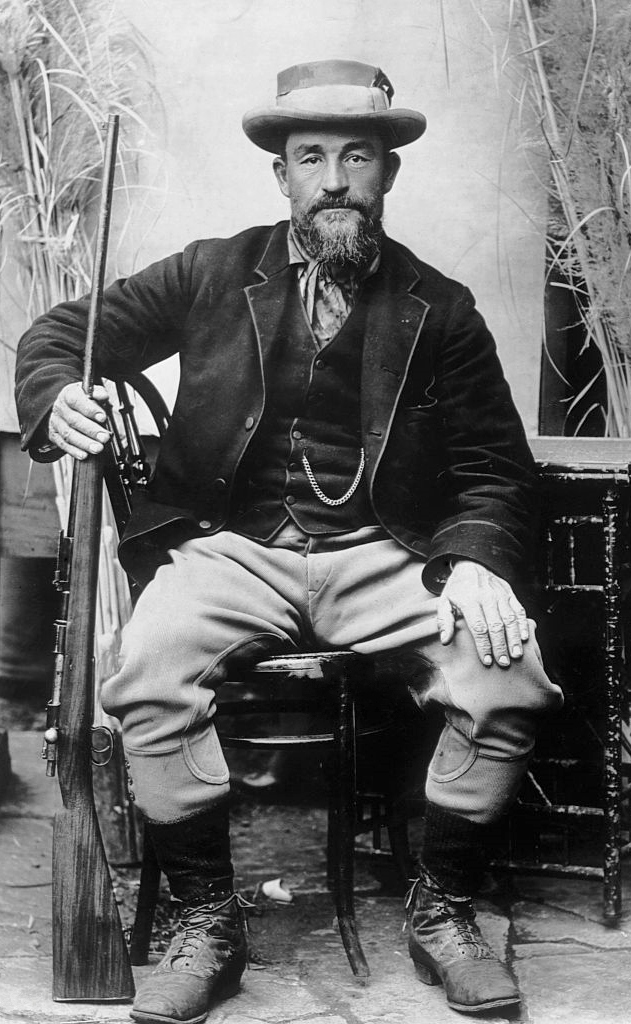Christiaan de Wet4
Autor/Urheber:
Shortlink:
Quelle:
Größe:
631 x 1024 Pixel (311680 Bytes)
Beschreibung:
Christiaan De Wet (1854–1922), Boer general, politician and rebel leader. The photo was taken in Potchefstroom on the 27th of August 1900, six days after he and his commando of 246 men escaped from near encirclement north of the Magaliesberg. He is posing with a restored rifle that was handed in to the English by one of many "hensoppers". This was usually done in return for having their property and farms spared by the enemy. De Wet wrote of this photo:
Potchefstroom was not at that time in the hands of the English. I rode over to the town, and then it was that the well-known photo was taken of me that has been spread about everywhere, in which I am represented with a Mauser in my hand. I only mention this so as to draw attention to the history of the weapon which I held in my hand. It is as follows:– When the enemy passed through Potchefstroom on their way to Pretoria, they left a garrison behind them, and many burghers went there to give up their arms, which forthwith were burnt in a heap. When the garrison left the dorp the burghers returned. Amongst them were some who set to work to make butts for the rifles that had been burnt. "This rifle," I was told by the man who showed it to me, "is the two hundredth that has been taken out of the burnt heap and repaired." This made such an impression on me that I took it in my hand, and had my photo taken with it. I am only sorry that I cannot mention the names of the burghers who did that work. Their names are worthy to be enrolled on the annals of our nation.
Potchefstroom was not at that time in the hands of the English. I rode over to the town, and then it was that the well-known photo was taken of me that has been spread about everywhere, in which I am represented with a Mauser in my hand. I only mention this so as to draw attention to the history of the weapon which I held in my hand. It is as follows:– When the enemy passed through Potchefstroom on their way to Pretoria, they left a garrison behind them, and many burghers went there to give up their arms, which forthwith were burnt in a heap. When the garrison left the dorp the burghers returned. Amongst them were some who set to work to make butts for the rifles that had been burnt. "This rifle," I was told by the man who showed it to me, "is the two hundredth that has been taken out of the burnt heap and repaired." This made such an impression on me that I took it in my hand, and had my photo taken with it. I am only sorry that I cannot mention the names of the burghers who did that work. Their names are worthy to be enrolled on the annals of our nation.
Kommentar zur Lizenz:
|
Dieses Werk ist gemeinfrei, weil seine urheberrechtliche Schutzfrist abgelaufen ist. Dieses Werk ist gemeinfrei in den Vereinigten Staaten, weil es vor dem 1. Januar 1927 veröffentlicht (oder beim U.S. Copyright Office registriert) wurde. |
|
| Es wurde festgestellt, dass diese Datei frei von bekannten Beschränkungen durch das Urheberrecht ist, alle verbundenen und verwandten Rechte eingeschlossen. | |
Lizenz:
Public domain
Credit:
Relevante Artikel
Christiaan de WetChristiaan Rudolf de Wet war ein südafrikanischer Politiker und General während des Zweiten Burenkriegs. .. weiterlesen
